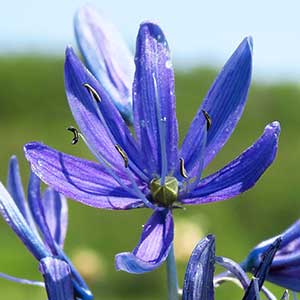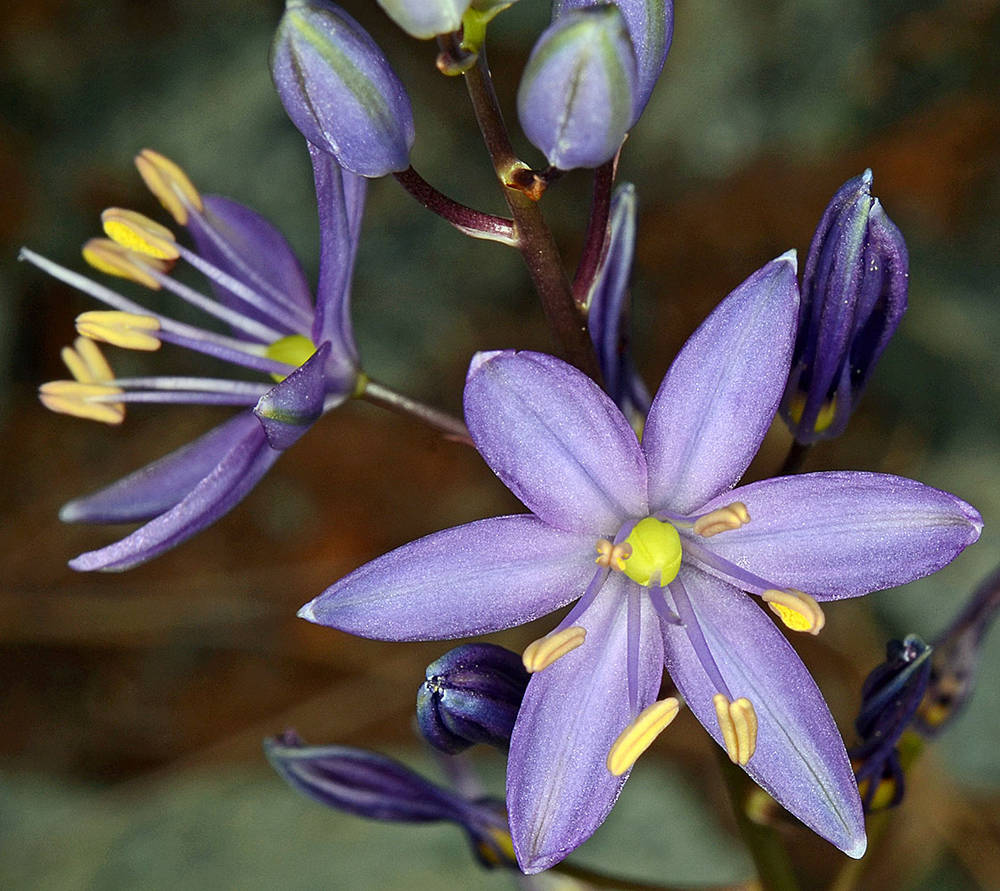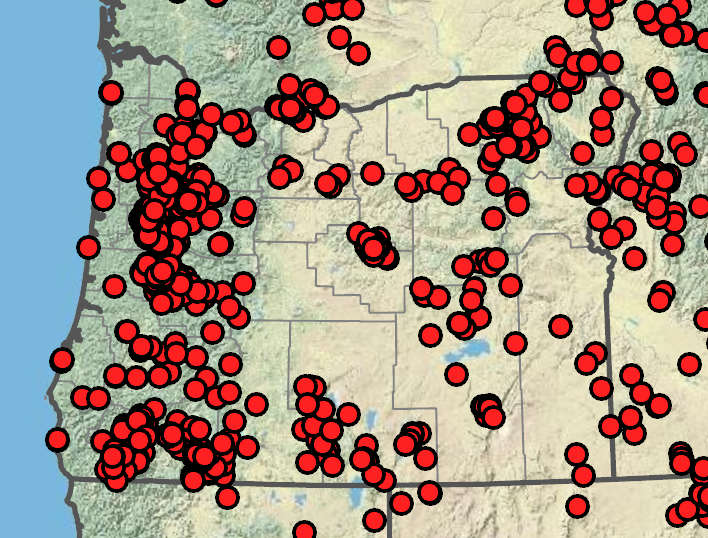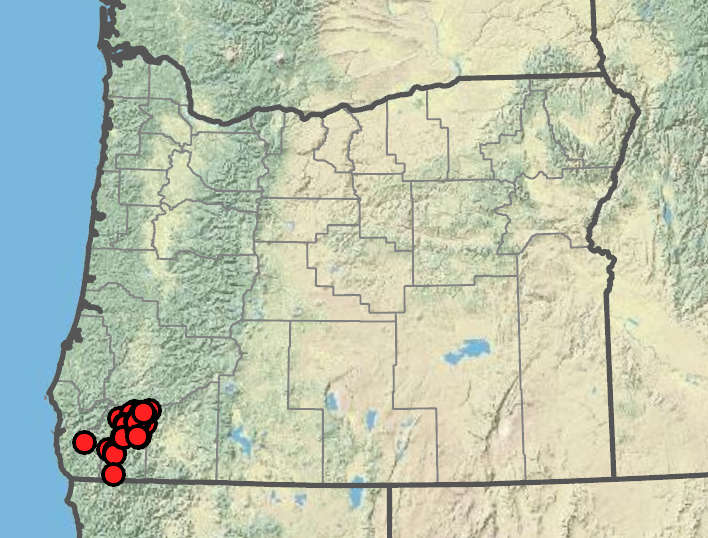Camassia quamash
Camassia howellii
common camas
Howell's camas
3–5, lanceolate to linear, 25–70 cm × 5–15 mm.
4–9(10), lanceolate, 10–70 cm × 3–12 mm.
nodes 3–45, with 2–5 or more flowers open at once, sterile bracts 0–2; most longer than pedicels, tan to blue;
pedicel-stem angle broad or less often narrow.
nodes 5–80, with up to 30 flowers open at once, sterile bracts 0–3; most equal or shorter than pedicels, tan to pale green;
pedicels often form broad angle with stem; but may curve inward.
corollas bilateral, rarely radial;
tepals 10–35 × 3–5 mm, pale blue to deep blue-violet, initially withering individually or connivently but separating in fruit and persisting on stem;
veins 3–9.
corollas radially symmetric;
tepals 10–20 × 3–5 mm, blue to blue-violet, withering connivently and twisting off top of fruit or deciduous from pedicels that remain on stem;
veins 3(5).
oriented away from or appressed to stem; ovoid-oblong, 15–25 mm.
globose, 5–10 × 5–9 mm; shiny when young but dulling with age.
5–10 per locule.
2–5 per locule.
Camassia quamash
Camassia howellii
Western North America. 8 subspecies; 6 subspecies treated in Flora.
Camassia quamash includes a confusing array of morphologically and geographically diverse subspecies. Differentiating them remains challenging, yet genetic data have revealed a detectable molecular signature between groups that grow “east” (breviflora, quamash, utahensis) and “west” of the Cascades (intermedia, maxima, walpolei). Taxa within these groups are still unresolved (Fishbein et al. 2010).
Open grassy or gravelly meadows, Jeffrey pine slopes, oakmadrone savanna, usually on serpentine soils. Flowering Apr–Jun. 200–700 m. Sisk. CA. Native.
The initially globose, shiny fruits and vespertine flowering found in C. howellii are unusual. In most camas species, new flowers open late afternoon to early evening and remain open, but flowers of Howell’s camas have a short floral life span (tepals close between dusk and dawn or shortly thereafter without reopening; Howell 1903, Kephart et al. unpublished). This feature may link Camassia to vespertine species within Chlorogalum (Jernstedt 2002). The small-flowered C. howellii sometimes grows in mesic habitats near great camas (C. leichtlinii), which flowers earlier in wetter, rocky seeps. Despite these differences, putative hybrids occur, as supported by morphological and phylogenetic evidence (Fishbein et al. 2010).
Susan Kephart
Susan Kephart





